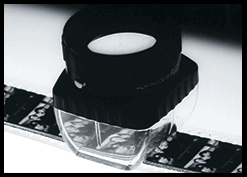Warren Sonbert: A Homecoming
/On Friday, December 5th, at 7pm, new digital restorations of Warren Sonbert's early films screen at the New York Film-Makers' Cooperative, where they were originally distributed on 16mm beginning in the 1960s. These digitizations are now available to rent from the Coop, both individually and as a touring package.
Tickets for this event are now available at filmmakerscoop.ecwid.com. Note: seating is limited.
Warren Sonbert (1947—1995) was one of the seminal figures working in American experimental film. He started making films in 1966 while a student at New York University. When he was just 20 years old, Sonbert had his first career retrospective at The Film-Makers' Cinematheque, which was the short-lived exhibition arm of The Film-Makers' Cooperative. (The Cinematheque later evolved into Anthology Film Archives). This screening drew the attention of the film critic Stuart Byron, who wrote in the commercial trade journal Variety: "Probably not since Andy Warhol’s THE CHELSEA GIRLS had its first showing at the Cinematheque... almost a year and a half ago has an ‘underground’ film event caused as much curiosity and interest in New York's non-underground world as did four days of showings of the complete films of Warren Sonbert at the Cinematheque’s new location on Wooster Street."
Sonbert’s earliest films, in which he captured the spirit of his generation, were inspired first by the university milieu and then by the denizens of Andy Warhol’s Factory scene, including superstars Rene Ricard and Gerard Malanga. In these loosely structured narratives, Sonbert boldly experimented with the relationship between filmmaker and protagonists through extensively choreographed hand-held camera movements within each shot.
In Sonbert's groundbreaking debut AMPHETAMINE (1966) — a pre-Stonewall document of gay intimacy that also functions as an homage to Alfred Hitchcock's VERTIGO (1958) — young men are filmed using intravenous drugs and kissing each other. This imagery, underscored by the music of Diana Ross and the Supremes, creates (to quote film critic Gary Morris) "a self-consciously decadent, queer closed space [where] the sense of transgressive pleasures is intense." A number of Sonbert's friends who appear in AMPHETAMINE appear in his next film, 1996's WHERE DID OUR LOVE GO? (named after the Supremes' album of the same name, which is seen playing on a turntable in AMPHETAMINE). In this film, Sonbert follows his young friends around New York City: at gallery exhibitions, and in artist lofts, studios, and storefronts. His colorful images of camaraderie and creativity (including footage captured within Andy Warhol’s studio) are underscored by the music of girl groups who were contemporaries of, or influenced by, the "Motown sound"; namely The Shirelles and The Ronettes.
AMPHETAMINE (1966).
Another Motown hit, Jimmy Ruffin's "What Becomes of the Brokenhearted?," is heard in Sonbert's third film HALL OF MIRRORS (1966). In this film, Sonbert combines outtakes from the 1948 Hollywood film AN ACT OF MURDER, featuring Florence Eldridge trapped in a fun-house hall of mirrors, with his own footage of Gerard Malanga caught in the reflective web of Lucas Samaras’ sculpture MIRRORED ROOM. A year later, in 1967's THE BAD AND THE BEAUTIFUL, Sonbert assembled 100-foot camera rolls into a series of mini-narratives about love between young couples. As in his previous films, Sonbert set his footage to a pop music soundtrack while paying homage to a Hollywood filmmaker (in this case, Vincente Minnelli and his 1952 feature of the same name).
In the late 1960s, Sonbert began traveling the world and eventually traded soundtracked mini-narratives for silent montage. He soon became known as the leading proponent of polyvalent montage, exemplified in his self-described magnum opus CARRIAGE TRADE. An evolving work-in-progress, CARRIAGE TRADE indelibly wove footage from Sonbert’s journeys throughout Europe, Africa, Asia, and the United States together with shots he removed from the camera originals of a number of his earlier films. The 61-minute version released in 1973 is the definitive form in which Sonbert realized CARRIAGE TRADE.
CARRIAGE TRADE (1973).
As noted by curator and archivist Jon Gartenberg, "With CARRIAGE TRADE, Sonbert began to challenge the theories espoused by the great Soviet filmmakers of the 1920s; he particularly disliked the ‘knee-jerk’ reaction produced by Eisenstein montage… [Sonbert’s polyvalent montage] approach… ultimately affords the viewer multi-faceted readings of the connections between shots through the spectator's assimilation of (according to Sonbert) ‘the changing relations of the movement of objects, the gestures of figures, familiar worldwide icons, rituals and reactions, rhythm, spacing, and density of images.’"
The Estate of Warren Sonbert has previously named Gartenberg Media Enterprises as the custodian of his legacy. Since Sonbert’s untimely passing in 1995, GME has worked on an extensive project to preserve, distribute and curate career retrospectives of his films on an international basis. In addition, original documents from the paper archive of his writings, which are now housed at Harvard University, were reprinted in a special 2014 issue of Framework: The Journal of Cinema and Media. A second issue of Framework, consisting of contemporaneous writings about Sonbert’s early films, was published in 2024. Jon Gartenberg was Guest Editor for both Framework issues.
Following the publication of the second Framework issue devoted to Sonbert, Gartenberg Media Enterprises and The Film-Makers’ Cooperative publicly premiered new digital restorations of a selection of Sonbert's early films at Metrograph on June 8th, 2025.
GME now celebrates, with The Film-Makers' Cooperative, the launch of the new digital transfers of Sonbert's films, as two hour-long programs that can be rented together as a touring package. The first program, Sonbert's Vignette Films, consists of Sonbert's early shorts WHERE DID OUR LOVE GO?, AMPHETAMINE, THE BAD AND THE BEAUTIFUL, and HALL OF MIRRORS. The second program, Transition to Polyvalent Montage, spotlights Sonbert's magnum opus CARRIAGE TRADE.
This screening will be followed by a discussion with archivist and curator Jon Gartenberg, President of Gartenberg Media Enterprises, and Matt McKinzie, Artistic Director of The Film-Makers' Cooperative.




